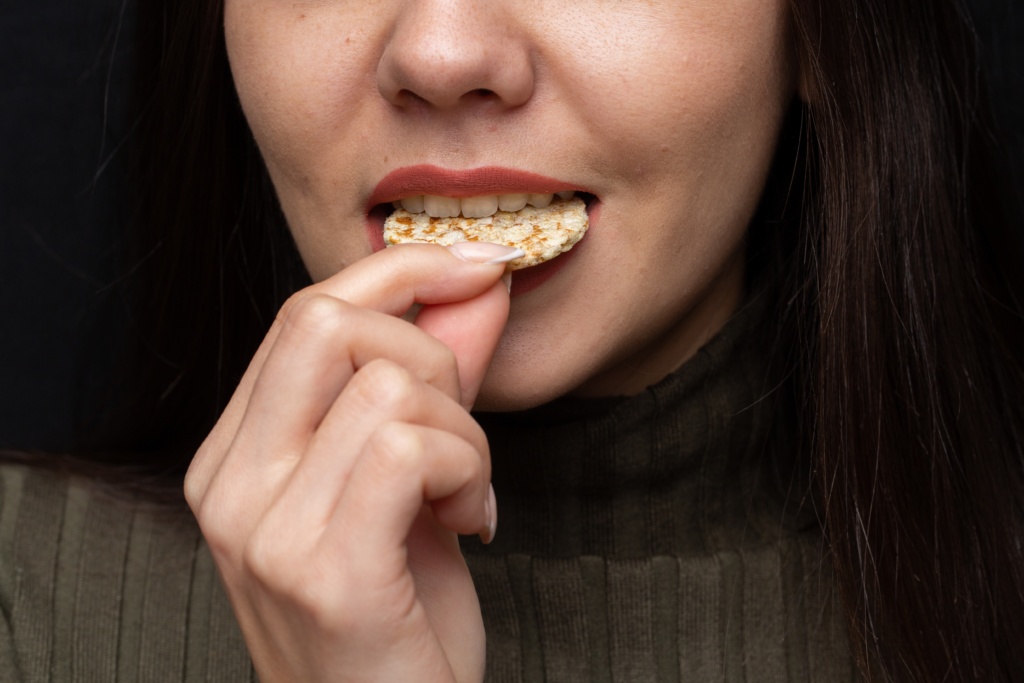Have you ever wondered what really happens to the food you eat once it enters your body? We often eat without giving much thought to the incredible journey food takes inside us. From the moment you take your first bite to the time your body uses that food for energy, repair, and growth—it’s a fascinating and complex process. we’ll explore how food works in our body, breaking it down into simple steps so you can better understand your own health and nutrition.
1. It All Begins in the Mouth, how does food work in our body

Digestion starts the moment food enters your mouth. This is where the mechanical and chemical breakdown begins:
- Chewing breaks food into smaller pieces, making it easier to digest.
- Saliva, produced by salivary glands, contains enzymes like amylase, which begins breaking down carbohydrates into simpler sugars.
This initial process not only prepares food for the stomach but also signals the rest of the digestive system to get ready for action.
2. Traveling Down the Esophagus
Once you swallow, the chewed food travels down the esophagus, a muscular tube that connects your mouth to your stomach. This movement is powered by peristalsis, which is a wave-like muscular contraction that pushes food downward.
3. The Stomach: Mixing and Breaking Down
The food reaches the stomach, where it is mixed with gastric juices containing:
- Hydrochloric acid (kills harmful bacteria)
- Pepsin (an enzyme that breaks down proteins)
The stomach churns the food into a semi-liquid substance called chyme. This process can take a few hours, depending on the type and amount of food you’ve eaten. Proteins begin to break down here, and fats start to emulsify.
4. Small Intestine: The Main Site for Digestion and Absorption
The chyme then moves into the small intestine, which is the powerhouse of digestion and nutrient absorption.
Here’s what happens:
- The pancreas releases enzymes that continue breaking down carbohydrates, proteins, and fats.
- The liver produces bile, stored and released by the gallbladder, which helps in fat digestion.
- Tiny finger-like projections called villi and microvilli in the intestinal lining absorb nutrients into the bloodstream.
Each type of nutrient follows a different pathway:
- Carbohydrates are broken down into glucose, the body’s main energy source.
- Proteins become amino acids, which help build and repair tissues.
- Fats are turned into fatty acids and glycerol, used for energy and cell functions.
5. Nutrient Transportation and Utilization
Once absorbed, nutrients travel through the bloodstream to cells all over the body. Each nutrient plays a specific role:
- Glucose powers your brain, muscles, and organs.
- Amino acids repair tissues, make enzymes, and support the immune system.
- Fats support hormone production, insulate the body, and store energy.
- Vitamins and minerals regulate hundreds of body processes, from bone health to nerve signaling.
Think of it like a delivery system—your bloodstream delivers the right package to the right address (cells and tissues) based on what your body needs at the time.
6. Large Intestine: Absorbing Water and Eliminating Waste
After the nutrients are absorbed, the leftover waste—mainly water, fiber, and undigested materials—moves into the large intestine (colon).
Here:
- Water is absorbed to prevent dehydration.
- Friendly gut bacteria help break down some of the remaining substances and produce certain vitamins like vitamin K.
- The remaining waste is turned into stool, which is then excreted through the rectum and anus.
7. The Role of Nutrients: Why Food Is More Than Just Fuel
Let’s take a closer look at the nutrients in our food and how they work in the body:
| Nutrient | Function |
| Carbohydrates | Main energy source (converted to glucose) |
| Proteins | Build and repair muscles, enzymes, hormones, and tissues |
| Fats | Energy, cell structure, brain health, and hormone production |
| Vitamins | Support immune system, skin health, and cellular functions |
| Minerals | Important for bones, heart health, nerve function, and hydration |
| Water | Regulates temperature, transports nutrients, removes waste |
Each meal you eat provides these essential components. That’s why balanced nutrition is key—your body needs a bit of everything to function optimally.
8. What Happens When You Don’t Eat Right?
When you don’t eat a well-balanced diet, your body struggles to function efficiently. Here are some possible effects:
- Lack of energy from insufficient carbs or calories
- Weak immunity due to lack of essential vitamins
- Muscle loss when protein is too low
- Poor concentration from unbalanced blood sugar levels
- Digestive problems due to low fiber or water intake
Food isn’t just about satisfying hunger—it’s your body’s fuel, maintenance crew, and defense system all rolled into one.
9. Listening to Your Body: Mindful Eating Matters
Understanding how food works in our body helps us make better choices. Mindful eating—paying attention to what, when, and how you eat—can improve digestion and nutrient absorption. Here are a few tips:
- Chew slowly to help digestion begin properly.
- Avoid distractions while eating to prevent overeating.
- Eat a variety of foods for complete nutrition.
- Stay hydrated to support digestion and absorption.
Final Thoughts
Food is not just something we eat to fill our stomachs—it’s an essential part of how our body functions. From digestion and absorption to nutrient distribution and waste elimination, every bite sets off a chain reaction that keeps us alive and well.
Now that you understand how food works in our body, you can start making more informed choices to nourish yourself every day. Remember, good nutrition isn’t about restriction—it’s about giving your body what it needs to thrive.
